Review| Inside Out
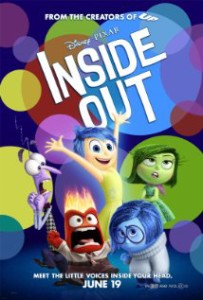 After two long, lonely years, Pixar is back; and this time they’ve brought us one of their most original and innovative films yet, Inside Out. As its title suggests, Inside Out takes place in two different spheres: the world inside the head of the 11 year-old protagonist, Riley (Kaitlyn Dias), and the world outside, the one in which we all live and breath. Populating Riley’s mind are a host of charming characters that each personify a particular emotion. First, is Joy (Amy Poehler), who is so affable that she is, quite literally, radiant. Fear is a purple, lanky, and googly-eyed character who spends most of his time obsessing over worst-case scenarios for every situation. The squatty, irritable one with fiery locks is Anger (Lewis Black), and Disgust (Mindy Kaling) is aptly depicted as a green girl with an attitude. Last—but most certainly not least—is the round, blue-hued Sadness (Phyllis Smith), who turns out to be so charming and three-dimensional that she steals the show.
After two long, lonely years, Pixar is back; and this time they’ve brought us one of their most original and innovative films yet, Inside Out. As its title suggests, Inside Out takes place in two different spheres: the world inside the head of the 11 year-old protagonist, Riley (Kaitlyn Dias), and the world outside, the one in which we all live and breath. Populating Riley’s mind are a host of charming characters that each personify a particular emotion. First, is Joy (Amy Poehler), who is so affable that she is, quite literally, radiant. Fear is a purple, lanky, and googly-eyed character who spends most of his time obsessing over worst-case scenarios for every situation. The squatty, irritable one with fiery locks is Anger (Lewis Black), and Disgust (Mindy Kaling) is aptly depicted as a green girl with an attitude. Last—but most certainly not least—is the round, blue-hued Sadness (Phyllis Smith), who turns out to be so charming and three-dimensional that she steals the show.
This emotive cast of characters find themselves in a crisis when Joy, who normally runs Riley’s control station by ensuring that she is always happy and upbeat, finds herself stranded in long-term memory with the dour Sadness. Running parallel to this plot is Riley’s external turmoil. Her family is forced to move to a new town, and as a result, she must learn to adapt to her new surroundings. And it is here, at the convergence of these two narrative strands, that Inside Out shines the brightest. Director Pete Docter (Monsters Inc. and Up), deftly switches back-and-forth, in-and-out of Riley’s mind at the most opportune times, refusing to allow one story arc to drown out the other. This is a complicated balancing act, and the Pixar team shows once again that a family movie need not be devoid of intricate and thoughtful storytelling. Of course there are a number of ways in which Inside Out stands, well, out from the rest of the competition, but it is especially noteworthy because it highlights two ways in which Pixar consistently sets the standard for animated feature films.
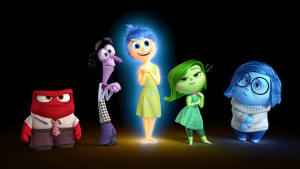 One of the common pitfalls into which movies aimed at a younger demographic often fall is that, tonally, they embrace the sort of phony sentimentalism that Joy represents at the beginning of Inside Out as she works endlessly to ensure that Riley’s memories are all happy. The problem is that many of the so-called happy endings that populate the world family films are hollow; they offer quick fixes to complex problems. But Inside Out is different. Without spoiling too much, suffice it to to say that by the end, Joy learns that her efforts to shield Riley from the other emotions may have been misplaced. Pixar’s willingness to explore emotional depth and complexity in an animated family film is one reason that they are able to continually raise the bar for the genre. This commitment to emotionally probing stories is something in which the Christian can rejoice. We desperately need more children’s movies that refuse to minimize anger, fear, sadness, and disgust in their protagonists. In this way, Inside Out is a reminder that God has made us passible creatures for a purpose.
One of the common pitfalls into which movies aimed at a younger demographic often fall is that, tonally, they embrace the sort of phony sentimentalism that Joy represents at the beginning of Inside Out as she works endlessly to ensure that Riley’s memories are all happy. The problem is that many of the so-called happy endings that populate the world family films are hollow; they offer quick fixes to complex problems. But Inside Out is different. Without spoiling too much, suffice it to to say that by the end, Joy learns that her efforts to shield Riley from the other emotions may have been misplaced. Pixar’s willingness to explore emotional depth and complexity in an animated family film is one reason that they are able to continually raise the bar for the genre. This commitment to emotionally probing stories is something in which the Christian can rejoice. We desperately need more children’s movies that refuse to minimize anger, fear, sadness, and disgust in their protagonists. In this way, Inside Out is a reminder that God has made us passible creatures for a purpose.
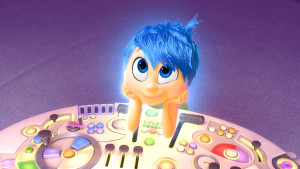 The second reason that Inside Out is the embodiment of Pixar’s success is that, in addition to being a thought-provoking coming-of-age story, it insists that growing up should not stifle child-like imagination. On the contrary, much like Pixar Animation Studio itself, Inside Out encourages creativity and ingenuity and sees it as a vital part of what makes us us. From its inventive depictions of the inner workings of a child’s mind, to its state-of-the-art animation, Inside Out testifies that humans were created to create, and in so doing, bring glory to their Creator.
The second reason that Inside Out is the embodiment of Pixar’s success is that, in addition to being a thought-provoking coming-of-age story, it insists that growing up should not stifle child-like imagination. On the contrary, much like Pixar Animation Studio itself, Inside Out encourages creativity and ingenuity and sees it as a vital part of what makes us us. From its inventive depictions of the inner workings of a child’s mind, to its state-of-the-art animation, Inside Out testifies that humans were created to create, and in so doing, bring glory to their Creator.
In the end, Inside Out offers some much-needed food for thought. It is a delight to the eyes, and it knows how to pull at your heartstrings while simultaneously offering some hope that sticks with you after you leave the theater. That is a rare treat indeed.




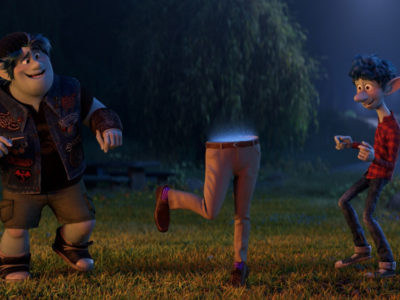
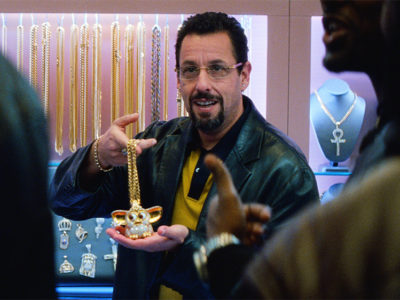


Pingback: #065 – Inside Out and A Time to Weep | Reel World Theology